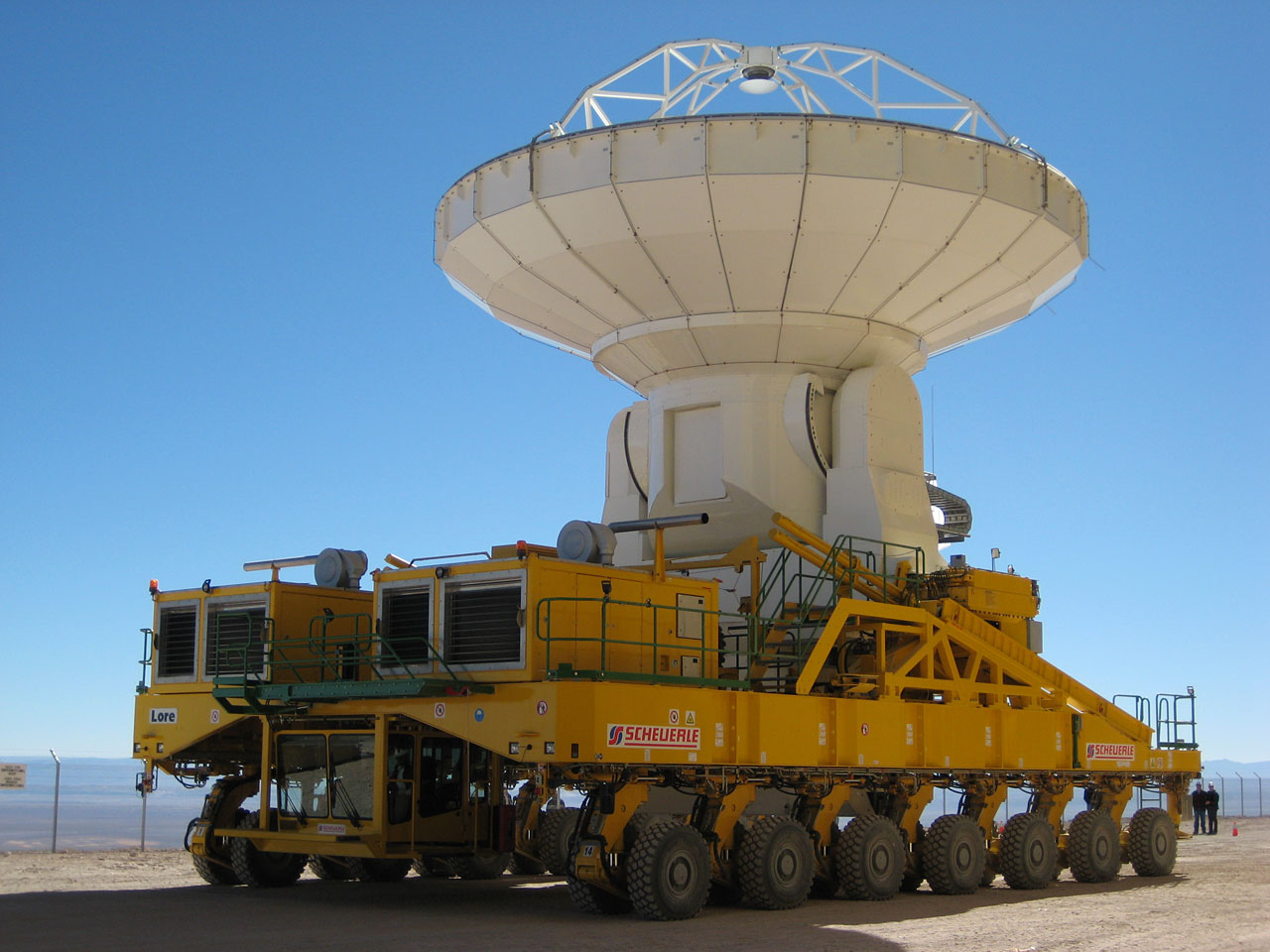Science
Related: About this forumALMA: Looking Through Dust To See Starbirth And Galaxies
ALMA: Looking Through Dust To See Starbirth And Galaxies
By Elizabeth Howell, Space.com Contributor | April 17, 2014 01:10am ET

The Atacama Large Millimeter/submillimeter Array (ALMA) is a telescope array in Chile that includes 66 receivers scattered across the Atacama Desert. The array is located at the European Southern Observatory and bills itself as "the largest astronomical project in existence."
ALMA is able to peer through the dust that obscures planetary systems under construction, or to look back at stars and galaxies that formed in the early days of the universe and emit their radiation in millimeter light — waves that are about 1,000 times longer than visible-light wavelengths.
Although there are other observatories that can do the same thing, what distinguishes ALMA is its sheer size and number of receivers. Working together, they provide more sensitivity in astronomical observations and allow astronomers to look at the universe in high definition.
Concept combinations
ALMA can be viewed as an amalgamation of three separate projects under conception: the Millimeter Array (MMA) of the United States, the Large Southern Array (LSA) of Europe and the Large Millimeter Array (LMA) of Japan. Through conversations between researchers, scientists concluded it would be easier to collaborate on one large project rather than creating several smaller ones.
More:
http://www.space.com/25534-alma.html
NYC_SKP
(68,644 posts)Why is the Atacama Desert so dry?
http://permaculturenews.org/2013/09/04/the-atacama-desert-chile-the-driest-desert-on-earth-five-reasons-why/
![]()
BlancheSplanchnik
(20,219 posts)Looks like a worthy link. ![]()
NYC_SKP
(68,644 posts)I need to get on the Facebook more often...
![]()
Ooh, Magical Miniature World of Snails!!!
![]()
BlancheSplanchnik
(20,219 posts)NYC_SKP
(68,644 posts)Like yerself!
Yeah! They are delightful!
![]()
BlancheSplanchnik
(20,219 posts)No doubt!
![]()
longship
(40,416 posts)That's 16,400 feet!
If you work there, you have to acclimate yourself first. Oxygen is available on site, if you need it.
The operation center is at 2,800 meters, about 9,800 feet.

But the supercomputer that does the hard work is at the high site. It's called the correlation. It looks pretty damned cool.

I wouldn't want to be the person who has to service it.
Judi Lynn
(160,609 posts)DreamGypsy
(2,252 posts)
ALMA Transporter “Lore” carries an ALMA antenna at the Operations Support Facility
From the European Southern Observatory website:
ALMA uses two of these enormous transporters, which have been named Otto and Lore. The twin vehicles are 20 metres long, 10 metres wide and 6 metres high, and each has 28 tyres. Even empty, the vehicles weigh in at 130 tonnes apiece. It takes a lot of power to move that much weight, so each vehicle comes equipped with two approximately 700-HP (500 kW) diesel engines and two 1500-litre fuel tanks. Despite their bulk and power, these bright yellow behemoths will be able to position the antennas to within a few millimetres, ensuring accurate placement on the antenna foundation pads. They are used to arrange the 50 12-metre diameter antennas of the main array in patterns spread over distances from 150 metres to about 16 kilometres.
Many unique design challenges were met in constructing Otto and Lore. A custom braking system and special safety devices are installed to protect against accidents and damage to the valuable ALMA antennas. The backrest of the driver’s seat is shaped to allow him or her to wear the oxygen tank needed for high altitude driving. It is not just the driver who feels the effect of the altitude: each of Otto and Lore’s 700-HP engines actually generate about 450 HP (320 kW) when working in the rarefied air of the 5000-metre high plateau.
The transporters have a top speed of 20 km/h, or 12 km/h when carrying an antenna. They may not be very fast, but the main concerns in their design are safety and precision. During loading and unloading of an antenna, or other critical manoeuvres, the transporters can be operated by a radio remote control, allowing the driver to stand outside the vehicle and keep a close eye on the machinery.
Without these impressive machines to carry its antennas, ALMA would be impossible. A modern observatory requires a combination of many different state-of-the-art technologies. Otto and Lore are playing their important role in the enormous and exciting ALMA project.
BlancheSplanchnik
(20,219 posts).
.
.
.
.
.
.
On edit... Oh, the article-- I must read that!